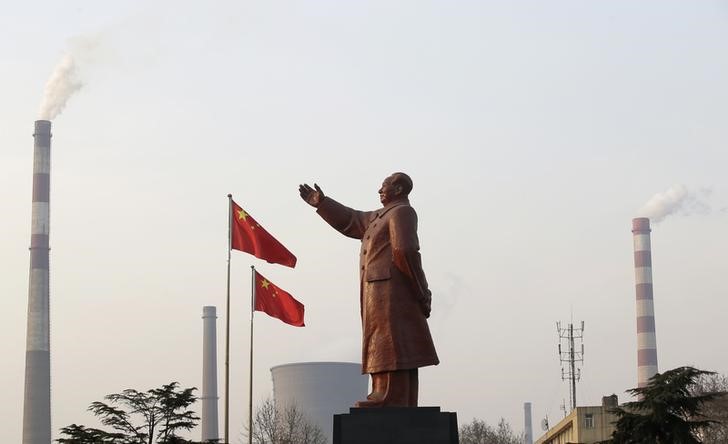By Barani Krishnan
Investing.com - Crude prices rose for a third straight day as top oil importer China continued to relax safeguards on the COVID-19 front while data showed fuel demand rose in the United States last week from higher public travel as well as activity by truckers to deliver packages for the year-end holidays.
In China, millions of people have been told to keep going to work — even if they’re infected with the coronavirus — as the government tries to veer from its previous COVID-Zero policy. Just weeks ago, catching the coronavirus in China meant being taken to government quarantine for an indeterminate stay. Entire residential buildings had been locked down before, trapping neighbors in their homes for days or weeks.
China has outlined the way it counts COVID-19 deaths, drawing skepticism about its latest fatality rates from the disease. Officially, there were only five COVID deaths on Tuesday, two on Monday - and none in the previous two weeks. China says its figures include only those who die from respiratory illnesses, such as pneumonia. The counting method goes against World Health Organization guidance - resulting in China’s latest figures being way below the death toll in many other countries.
“It’s still COVID-Zero in China, only that the zero now counts for making statistics from the pandemic zero, rather than having the previous tough policy that tried to ensure there was zero COVID spread,” said John Kilduff, partner at New York energy hedge fund Again Capital. “Like all things out of China, this too needs to be taken with a grain of salt. But it’s the official version of events and the economic reopening narrative in China is providing crude prices the boost they need.”
U.S. West Texas Intermediate crude for delivery in February settled up $2.06, or 2.7%, at $78.29 per barrel. Earlier, WTI, as it is known, hit an intraday high of $78.38. For the week thus far, it has risen 5.1%, following through with last week’s gain of 4.1%. In the prior week, WTI fell 11%, falling to as low as $70.11 — a bottom not seen since Dec 21, 2021.
U.K. origin Brent crude for delivery in February settled up $2.21, or 2.8%, at $82.20 per barrel. Earlier, Brent hit a session high of $82.27. For the week though, the global crude benchmark was up 4%, similar to the gain seen for all of last week. In the prior week, Brent slumped 11% to reach as low as $75.14 — a bottom not seen since Dec 23, 2021.
Oil markets also rallied after data on Wednesday showed U.S. crude oil inventories fell three times more than expected last week as fuel demand rose from higher public travel as well as activity by truckers to deliver packages for the year-end holidays.
Crude inventories fell by 5.894M barrels for the week ended Dec. 16, versus a drawdown of 10.231M during the previous week to December 9, the government-run Energy Information Administration, or EIA, said in its Weekly Petroleum Status Report. Analysts polled by U.S. media had expected a smaller drawdown of 1.657M barrels for last week.
Crude stockpiles in the government-controlled U.S. Strategic Petroleum Reserve, or SPR, fell by 3.7M barrels to reach 378.6M last week, the EIA report showed. The Biden administration has drawn more than 200M barrels from the SPR over the past year to bridge supply deficits in the marketplace, in order to keep both crude and retail prices of gasoline low. The dependency on the SPR has brought stockpiles in the reserve to the lowest levels since December 1983, although the government has announced plans to start refilling the reserve from February 2023.
Gasoline stockpiles rose by 2.53M barrels, versus a forecast build of 2.14M barrels. In the prior week, gasoline stockpiles rose by 4.496M. Gasoline is the top automobile fuel in the United States.
Inventories of distillates, meanwhile, rose by 242,000 barrels last week, compared with a projected build of 336,000. In the prior week, gasoline inventories rose by 1.364M. Distillates are refined into diesel for trucks, buses, trains and ships as well as fuel for jets.
Gasoline and distillate inventories appeared to experience a larger inventory build last week from reduced refining activity.
Refineries operated at 90.9% of their operable capacity last week, versus 92.2% in the previous week to December 2, the EIA said.
While gasoline and distillate inventories did rise, total product supply of both to the rmarketplace -- an indication of retail demand -- was also higher.
Total product supply of finished motor gasoline was at 8.714M barrels per day last week, up by 489,000 barrels per day.
Supply of distillates fuel oil, meanwhile, rose by 247,000 barrels per day to 4.015M barrels per day.
Supply of kerosene-type jet fuel fell by 52,000 barrels per day, to reach 1.712M barrels daily.
